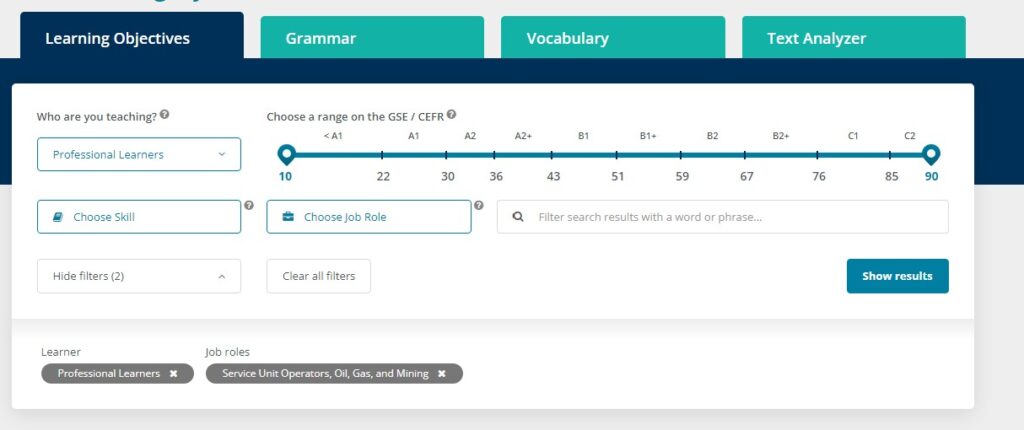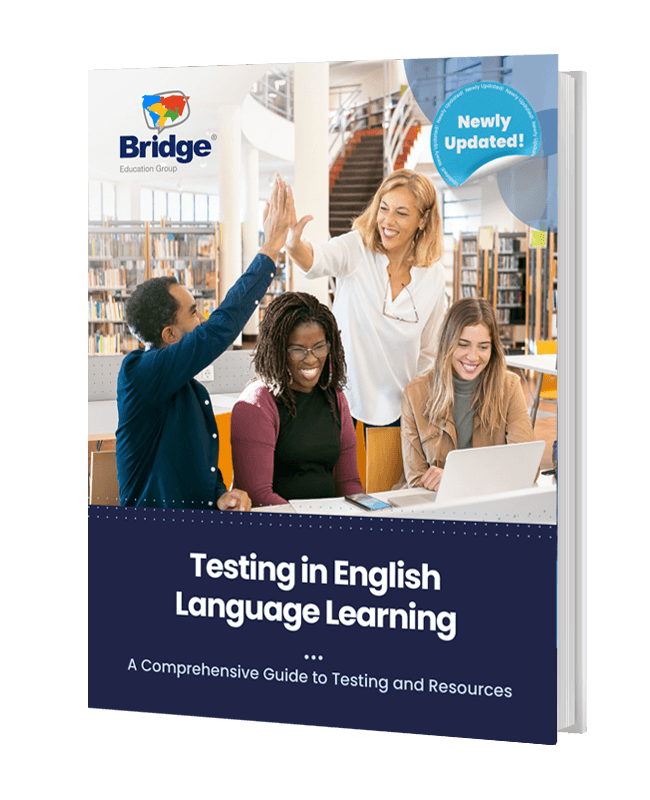Language proficiency assessment is a critical element of any corporate language training program, but how can assessment results be used to fast-track English language learning? Students in corporate language learning programs typically take tests like Linguaskill, after which results are matched with an international scale like the CEFR. Combining the CEFR with the GSE can then provide Business English teachers with the tools they need to speed up English language learning.
Most language proficiency tests are tied to the Common European Framework of Reference for Language (CEFR), the international standard for describing language ability. While the CEFR provides valuable information on its six-level English proficiency classification, the expanded scale of the Global Scale of English (GSE) can provide teachers with the insights they need to personalize instruction.
Designed by Pearson, the GSE breaks down the six CEFR language levels on a scale of 10-90, offering granular language level insights that can inform instruction and motivate language learners. Let’s explore how the GSE can be used to create personalized learning pathways to fast-track English language learning.
Ready to start teaching Business English? Learn more about Bridge’s Teaching Business English Specialized Certification.
Tracking progress with the GSE
The CEFR’s six-level English proficiency classification ranges from A1 to C2. Learning objectives are tied to each level, but the instruction needed to progress to the next level can vary widely due to factors such as the student’s learning purpose, time constraints, and native ability.
The GSE was developed to extend the scale and range of learning objectives to support a more granular approach. Aligned with the CEFR, the GSE identifies what a student can do at each point of its expanded scale. This information not only provides teachers with valuable teaching insights but also allows them to track students’ nuanced learning progress as they master new skills and move along the extended scale.
Using the learning objectives, teachers can plan instruction to target specific skills while continually assessing the student’s progress, both of which can speed up the language learning process.
Read about five reasons to consider English as a lingua franca when teaching Business English.

Mapping students’ target performance
The GSE also maps a student’s target performance across a range of skills and domains. This provides the teacher with a roadmap of learning objectives, which can then be used to define micro and macro learning goals.
This can be particularly helpful for teaching adult professionals. For Business English students, the GSE’s occupational domain learning objectives for professional English further specify learning objectives to meet professional or business needs; and for English for Specific Purposes (ESP) students, the GSE’s Job Profiles further specify learning objectives to meet specific job needs.
Essentially, the GSE can be used to map a learning pathway to the next language proficiency level. Teachers can then target their teaching strategies, materials, and resources to meet each objective and streamline the learning process.
Read about ways to hyper-personalize Business English teaching with AI.
Take a deep dive into the spectrum of English language exams and resources with the free guide to
Testing in English Language Learning
DownloadLeveraging the GSE Teacher Toolkit
The GSE Teacher Toolkit is another important element of the GSE as it provides a framework for curriculum development and student progress tracking. Free and interactive, the toolkit provides separate tabs for learning objectives, grammar, vocabulary, and text analysis. The text analyzer is an AI-powered tool that can be used to identify the proficiency levels of long texts. Each tab provides a variety of specific topics, subjects, and evaluation criteria.
Using the toolkit, teachers can:
- Identify learning objectives on the expanded scale
- View students’ target performances mapped across skills and domains
- Leverage built-in testing tools to assess performance
- Find level-appropriate grammar and vocabulary
- Utilize aligned coursebook recommendations
- Track students’ micro-progressions toward learning goals
Teachers can use the GSE to set appropriate goals for their Business English students, access resources for relevant skills such as writing emails or learning industry jargon, provide targeted feedback, and measure progress across the four skills categories.
Read more about leveraging English proficiency testing in academics and employment.

Bridge Corporate Language Learning programs
Business English teachers with Bridge Corporate Language Learning leverage the GSE to provide targeted language training to employees around the world. In corporate language training programs, company stakeholders also benefit from the GSE, not only because it can be used to fast-track English language learning, but also because it can be used to track even micro-progressions in learning.
The GSE’s learning objectives also provide insights into specific English skills required for particular jobs that can be used to gauge the appropriate skill levels needed for employees to perform the jobs. With this information, stakeholders can define language proficiency level standards employees must meet to apply for the jobs.
Bridge teachers provide private tutoring and teach small groups, leveraging the GSE, Teacher Toolkit, and the textbook series, Business Partner, by Pearson. Business Partner provides students with practical training to transition from the classroom to the job. Each course level is developed in alignment with the GSE’s learning objectives for professional English.
Based on a student’s personalized learning pathway, teachers can assign specific text sections and activities so the learner isn’t starting from scratch but is instead focusing on specific competencies they need to master to progress to the next proficiency level.
For Business English teachers, the detailed scale and learning objectives of the GSE provide great tools to inform their instruction and fast-track their students’ English language learning. The GSE focuses on all four major skill areas, but based on the learner’s level and learning purpose, teachers can create personalized learning pathways to streamline the learning process.
Rather than re-teaching what students already know, teachers can provide competency-based instruction that’s efficient and effective, and motivate learners and program stakeholders as they see continual learning progress.










